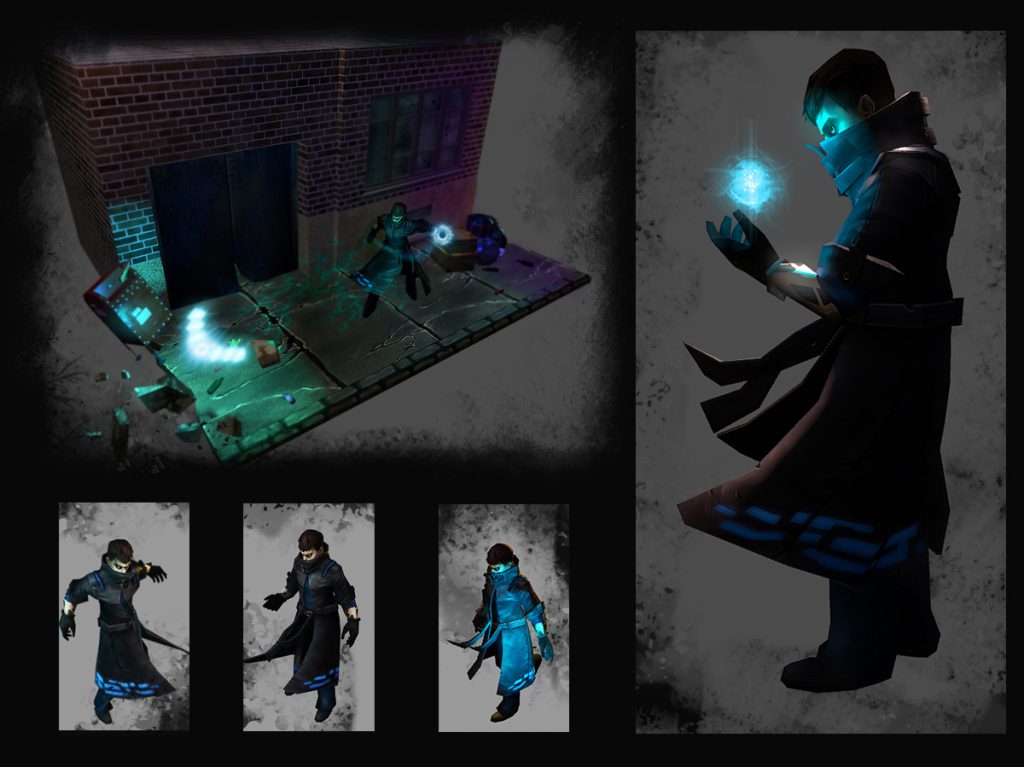Our main character
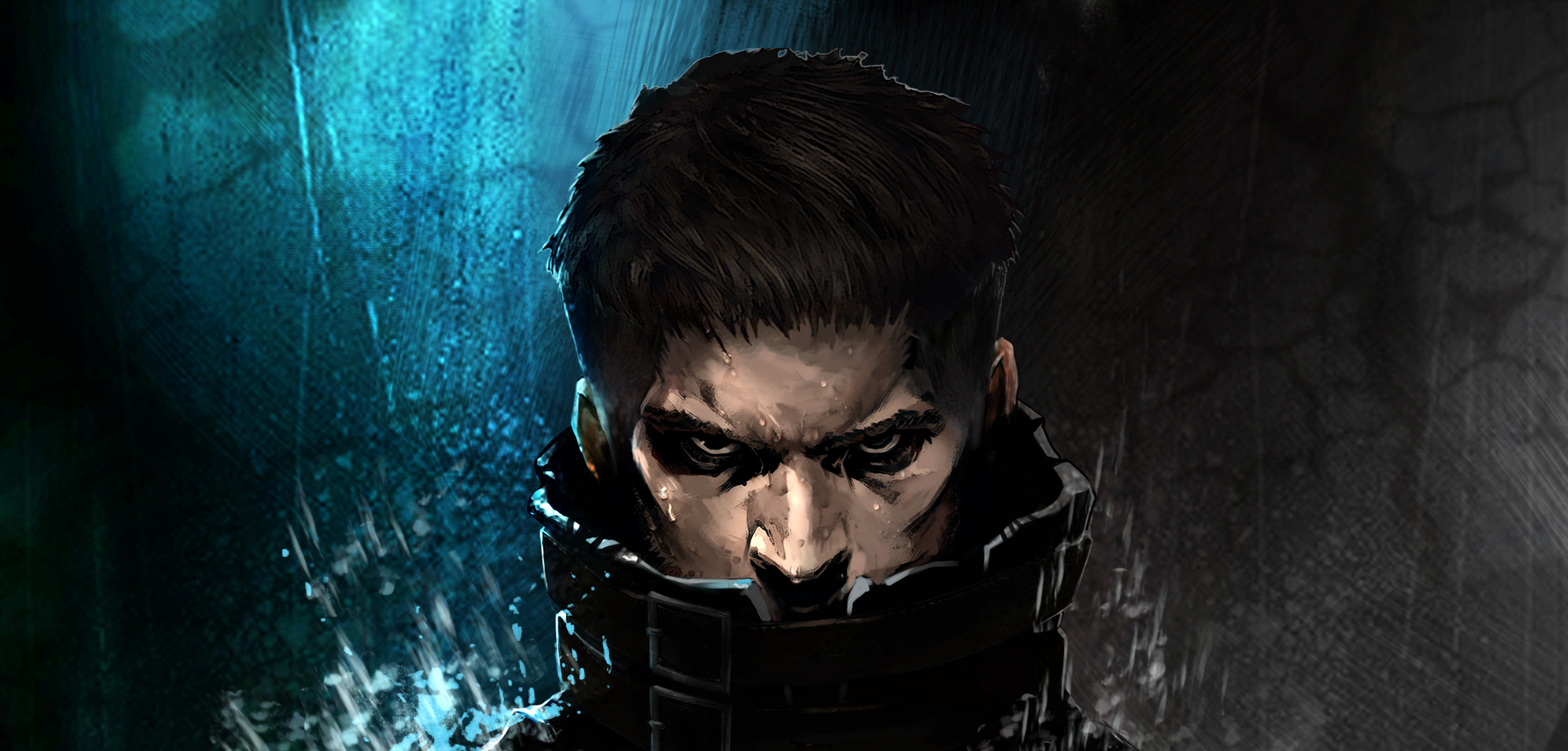
Building the main character of a game is always an important step that serves as a benchmark for the rest of the artistic work. Today, I thought I would lead you through the artistic and technical aspects of assembling our main character.
First is the concept art. We wanted a character that would crystallize our view of a modern-day mage. He needed to feel magical and mysterious, of course, but we also wanted him to look bad ass, with a very determined look on his face. He’s not an anti-hero, but it’s clear that he lets nothing get in his way. Then, we wanted him to be stylish and have some kind of visual signature that people would identify right away. The long leather coat, and particularly the neck piece, achieve this goal pretty well, we think. And lastly, we wanted him to look like someone who needs to hide and avoid exposure. This ties in tightly with his back story, but also with the world building rules that we set up; namely that magic exists in secrecy, while regular people are oblivious to it and believe it to be just myths. One challenge that we faced early on was that the character was just too dark, which made him almost invisible in-game against the shadowy background. Back then, the leather coat was fuller and had few other features. So we had to give him several elements that would make him stand out, such as separating the back of the jacket in two for independent animations, and also adding several blue touches, which serves the additional purpose of making him feel more magical.
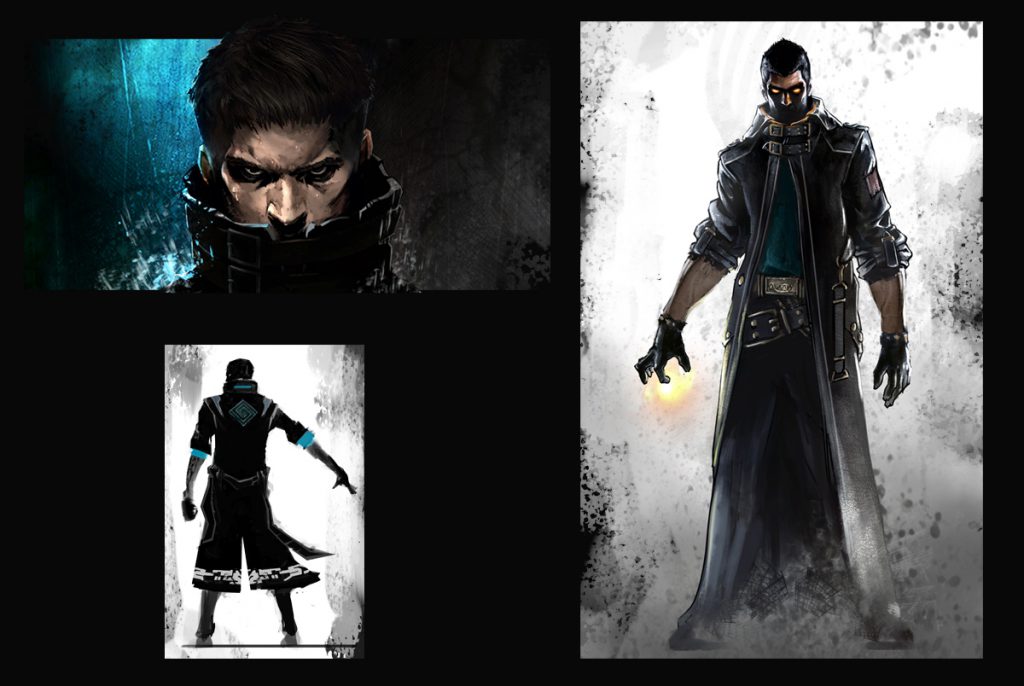
Next step was to model the character in 3D. Because our target platform is mobile, the character needed to be very light, yet we wanted him to look good and not feel blocky. We therefore chose to put more details in the parts that define him the most visually, mostly the top of the body, which results in the eye focusing on those and kind of not realizing that the rest is quite simple. The model is made of just about 2000 triangles, which I think will surprise a lot of people. Next is the texture. Because of technical constraints, we needed to avoid complex, multi-texture shaders. We instead opted for a more comic book style, with a little inspiration from League of Legends. As you can see, we worked a lot on the rendering of leather and skin, which come out very well, we think.
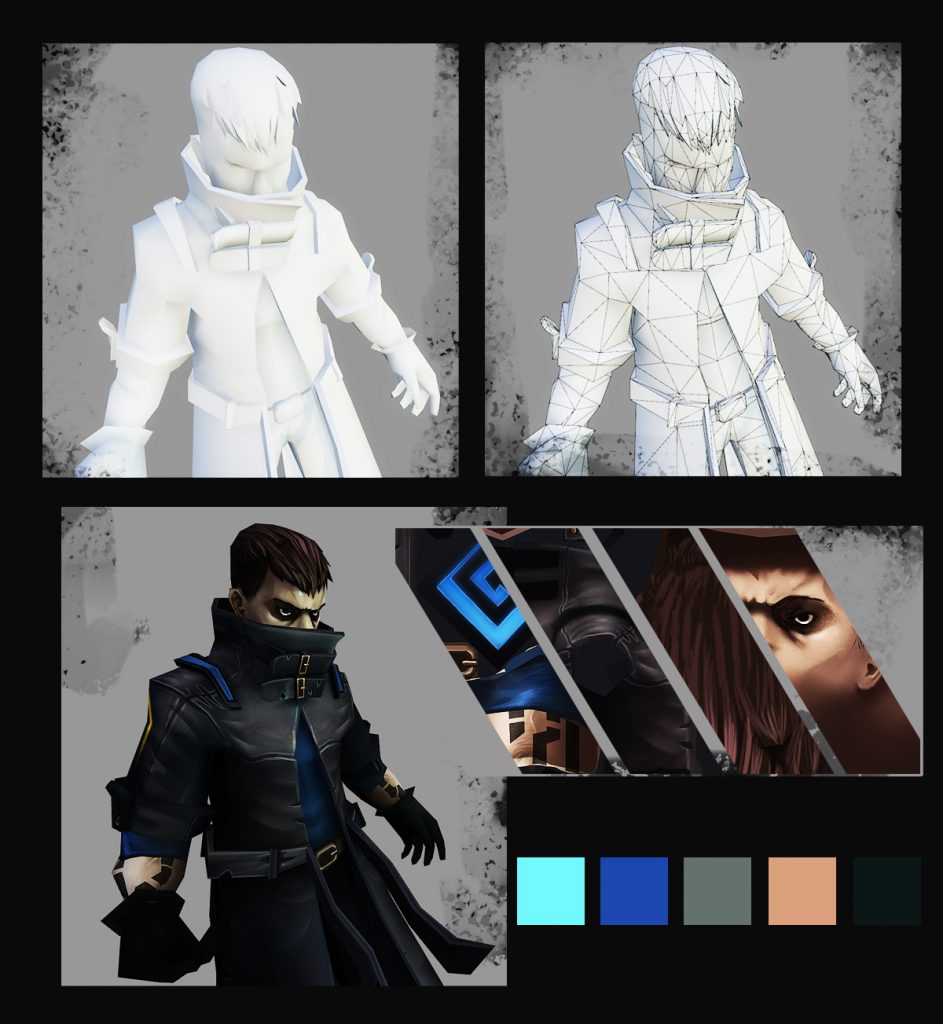
The last step was to attach the mesh to a skeleton that we had previously designed for action. The skeleton needed to have a limited amount of bones, but we still wanted it to be efficient enough to allow dynamic poses like those you find in comic books. A trick we used was to give a good amount of bones to the coat and belts, which really helps to create that action feeling.
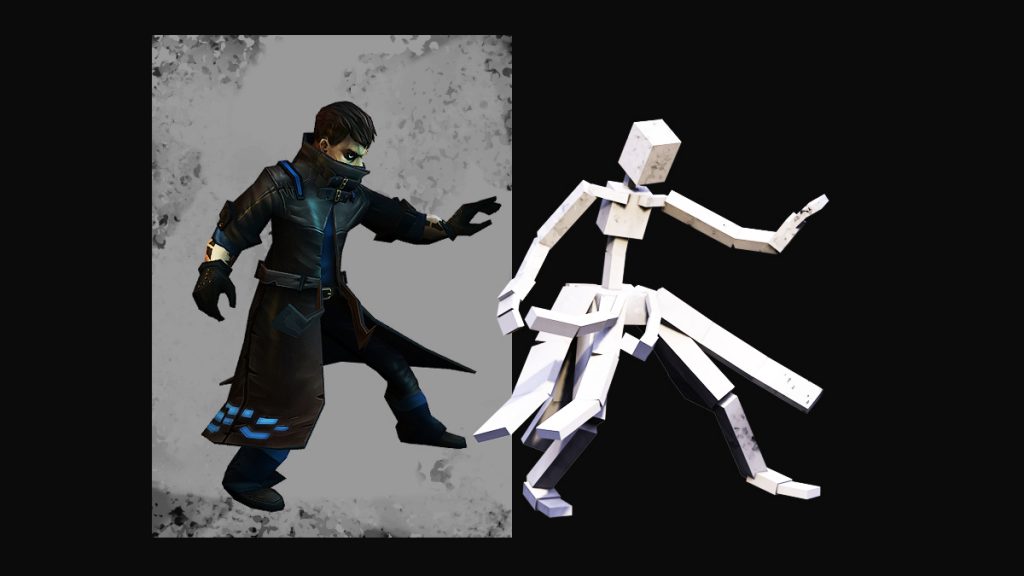
And here’s the final result, with 3D lighting and some of our in-game props. Hope you like it!
